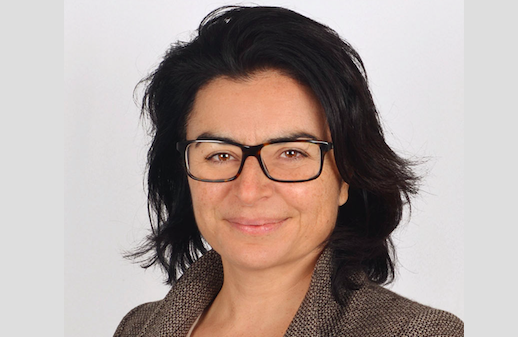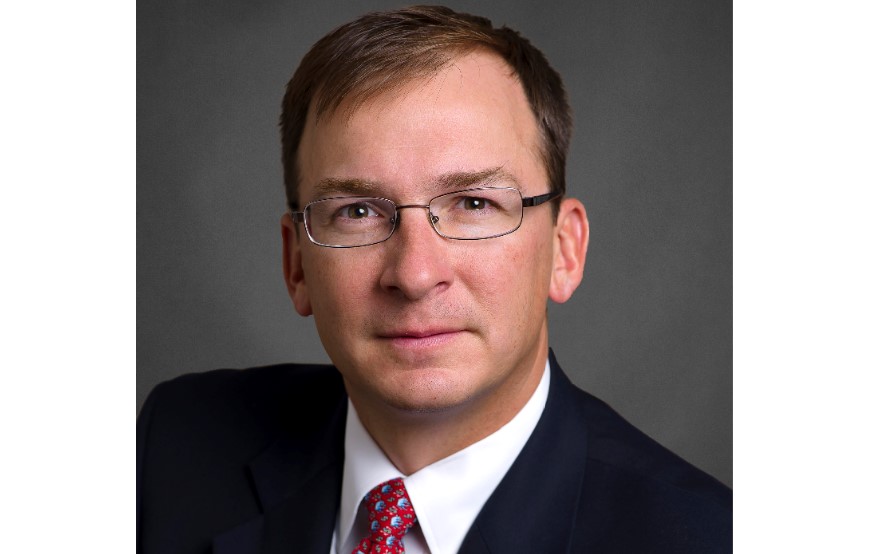US Equities New Record High Overrides Fears of Rising Inflation
| By Cecilia Prieto | 0 Comentarios

The U.S. equity market set a record high during the last week of July with the benchmark S&P 500 index closing higher for the sixth consecutive month, overriding fears of rising inflation and a potential slowdown in economic growth. On July 19, the U.S. Business Cycle Dating Committee announced that the COVID-19 induced two month U.S. recession from March to April of 2020 was the shortest on record, putting the 1980 February to July recession in second place.
Upcoming key events include Fed Chairman Powell’s keynote speech at the Jackson Hole Economic Symposium on this year’s theme “Macroeconomic Policy in an Uneven Economy,” on Aug. 26, which follows the July jobs report that came out on August 6th. Goldman Sachs economists “expect the Fed will first hint that it intends to decrease the size of its $120 billion monthly asset purchases at its September meeting, formally announce tapering in December, and begin tapering in early 2022.” Chairman Bernanke’s 2013 ‘taper tantrum’ statement that the Fed “could in the next few meetings take a step down in its pace of purchases” started a five-day, 40 basis point rise in the 10-year UST yield to 2.6% and 5% drop in stocks.
GAMCO’s Private Market Value (PMV) with a Catalyst™ stock research ideas highlighted as ‘stock picks’ during BARRON’S 2021 Midyear Roundtable, published in the July 19, issue, were: CNH Industrial (CNHI) that recently purchased Raven Industries (RAVN), a leader in precision-agriculture technology, Mexico’s TV network Grupo Televisa (TV) popular with the Spanish-speaking population, Deutsche Telekom (DTE) with a valuable stake in T-Mobile US (TMUS), Vivendi (VIV) a play on music streaming, ViacomCBS (VIACA) a restructuring play, Liberty Braves Group (BATRA) with John Malone at bat, Madison Square Garden Sports (MSGS) with James Dolan up, and Traton (8TRA) a truck maker spun out of Volkswagen with 25% of the Class 8 truck market in Europe, and now in the U.S. via its purchase of Lisle, Illinois based Navistar Inc.
Looking to M&A, Willis Towers Watson (WLTW) and Aon (AON) mutually agreed to walk away from their all-stock, $30 billion merger. Willis Towers Watson agreed to be acquired by Aon in March 2020 and terms of the deal called for Willis Towers shareholders to receive 1.08 shares of Aon for each share. In June, the U.S. DOJ filed suit to block the deal even though the European Commission had already granted conditional regulatory approval after the parties had agreed to sell overlapping business units that generated billions of dollars in revenue. Following efforts to negotiate additional divestitures to mollify the DOJ, an impasse was reached with the regulator and the parties opted to continue as separate companies. Willis Towers Watson received a $1 billion termination fee from Aon as a result, and will use the funds to buy back $1 billion of its stock. The unexpected move resulted in spreads widening on other mergers in sympathy.
Although this was a shock to the M&A market, we believe conditions are strong for continued strength building off of the record $2.8 billion from the first half of the year. Favourable dynamics remain in place, including historically low interest rates, accommodating debt markets, substantial dry powder held by private equity firms and management teams looking to better compete in an overall evolving global marketplace. While more deals do not necessarily translate to outsized returns, it, coupled with these various drivers, certainly provides for an encouraging landscaping and backdrop for investment opportunities within a portfolio like ours.
Rounding out our outlook with the convertibles space, the global convertible market saw some weakness in July, weighed down by a few large Chinese issuers. While some of these issues are now more attractively priced, we continue to view them cautiously. July was also the worst month for new issuance globally in nearly two years with only $3.4 billion of convertibles pricing. We are confident that issuance will pick back up as companies exit quiet periods around earnings and we approach typically busier fall months. The fundamental reasons for increased convertible issuance are still quite intact with low interest rates, increasing equity prices, and favourable tax environments available to most potential issuers.
To summarize, GAMCO continues to expect more deals — mergers, spinoffs, and other forms of financial engineering. Stocks should continue to do well with politicians spending to ensure a good economy for the midterms, and convertibles are an appealing way to stay invested in equities with the benefit of asymmetric risk exposure.
___________________________________________
To access our proprietary value investment methodology, and dedicated merger arbitrage portfolio we offer the following UCITS Funds in each discipline:
GAMCO MERGER ARBITRAGE
GAMCO Merger Arbitrage UCITS Fund, launched in October 2011, is an open-end fund incorporated in Luxembourg and compliant with UCITS regulation. The team, dedicated strategy, and record dates back to 1985. The objective of the GAMCO Merger Arbitrage Fund is to achieve long-term capital growth by investing primarily in announced equity merger and acquisition transactions while maintaining a diversified portfolio. The Fund utilizes a highly specialized investment approach designed principally to profit from the successful completion of proposed mergers, takeovers, tender offers, leveraged buyouts and other types of corporate reorganizations. Analyzes and continuously monitors each pending transaction for potential risk, including: regulatory, terms, financing, and shareholder approval.
Merger investments are a highly liquid, non-market correlated, proven and consistent alternative to traditional fixed income and equity securities. Merger returns are dependent on deal spreads. Deal spreads are a function of time, deal risk premium, and interest rates. Returns are thus correlated to interest rate changes over the medium term and not the broader equity market. The prospect of rising rates would imply higher returns on mergers as spreads widen to compensate arbitrageurs. As bond markets decline (interest rates rise), merger returns should improve as capital allocation decisions adjust to the changes in the costs of capital.
Broad Market volatility can lead to widening of spreads in merger positions, coupled with our well-researched merger portfolios, offer the potential for enhanced IRRs through dynamic position sizing. Daily price volatility fluctuations coupled with less proprietary capital (the Volcker rule) in the U.S. have contributed to improving merger spreads and thus, overall returns. Thus our fund is well positioned as a cash substitute or fixed income alternative.
Our objectives are to compound and preserve wealth over time, while remaining non-correlated to the broad global markets. We created our first dedicated merger fund 32 years ago. Since then, our merger performance has grown client assets at an annualized rate of approximately 10.7% gross and 7.6% net since 1985. Today, we manage assets on behalf of institutional and high net worth clients globally in a variety of fund structures and mandates.
Class I USD – LU0687944552
Class I EUR – LU0687944396
Class A USD – LU0687943745
Class A EUR – LU0687943661
Class R USD – LU1453360825
Class R EUR – LU1453361476
GAMCO ALL CAP VALUE
The GAMCO All Cap Value UCITS Fund launched in May, 2015 utilizes Gabelli’s its proprietary PMV with a Catalyst™ investment methodology, which has been in place since 1977. The Fund seeks absolute returns through event driven value investing. Our methodology centers around fundamental, research-driven, value based investing with a focus on asset values, cash flows and identifiable catalysts to maximize returns independent of market direction. The fund draws on the experience of its global portfolio team and 35+ value research analysts.
GAMCO is an active, bottom-up, value investor, and seeks to achieve real capital appreciation (relative to inflation) over the long term regardless of market cycles. Our value-oriented stock selection process is based on the fundamental investment principles first articulated in 1934 by Graham and Dodd, the founders of modern security analysis, and further augmented by Mario Gabelli in 1977 with his introduction of the concepts of Private Market Value (PMV) with a Catalyst™ into equity analysis. PMV with a Catalyst™ is our unique research methodology that focuses on individual stock selection by identifying firms selling below intrinsic value with a reasonable probability of realizing their PMV’s which we define as the price a strategic or financial acquirer would be willing to pay for the entire enterprise. The fundamental valuation factors utilized to evaluate securities prior to inclusion/exclusion into the portfolio, our research driven approach views fundamental analysis as a three pronged approach: free cash flow (earnings before, interest, taxes, depreciation and amortization, or EBITDA, minus the capital expenditures necessary to grow/maintain the business); earnings per share trends; and private market value (PMV), which encompasses on and off balance sheet assets and liabilities. Our team arrives at a PMV valuation by a rigorous assessment of fundamentals from publicly available information and judgement gained from meeting management, covering all size companies globally and our comprehensive, accumulated knowledge of a variety of sectors. We then identify businesses for the portfolio possessing the proper margin of safety and research variables from our deep research universe.
Class I USD – LU1216601648
Class I EUR – LU1216601564
Class A USD – LU1216600913
Class A EUR – LU1216600673
Class R USD – LU1453359900
Class R EUR – LU1453360155
GAMCO CONVERTIBLE SECURITIES
GAMCO Convertible Securities’ objective is to seek to provide current income as well as long term capital appreciation through a total return strategy by investing in a diversified portfolio of global convertible securities.
The Fund leverages the firm’s history of investing in dedicated convertible security portfolios since 1979.
The fund invests in convertible securities, as well as other instruments that have economic characteristics similar to such securities, across global markets (but the fund will not invest in contingent convertible notes). The fund may invest in securities of any market capitalization or credit quality, including up to 100% in below investment grade or unrated securities, and may from time to time invest a significant amount of its assets in securities of smaller companies. Convertible securities may include any suitable convertible instruments such as convertible bonds, convertible notes or convertible preference shares.
By actively managing the fund and investing in convertible securities, the investment manager seeks the opportunity to participate in the capital appreciation of underlying stocks, while at the same time relying on the fixed income aspect of the convertible securities to provide current income and reduced price volatility, which can limit the risk of loss in a down equity market.
Class I USD LU2264533006
Class I EUR LU2264532966
Class A USD LU2264532701
Class A EUR LU2264532610
Class R USD LU2264533345
Class R EUR LU2264533261
Class F USD LU2264533691
Class F EUR LU2264533428
Disclaimer:
The information and any opinions have been obtained from or are based on sources believed to be reliable but accuracy cannot be guaranteed. No responsibility can be accepted for any consequential loss arising from the use of this information. The information is expressed at its date and is issued only to and directed only at those individuals who are permitted to receive such information in accordance with the applicable statutes. In some countries the distribution of this publication may be restricted. It is your responsibility to find out what those restrictions are and observe them.
Some of the statements in this presentation may contain or be based on forward looking statements, forecasts, estimates, projections, targets, or prognosis (“forward looking statements”), which reflect the manager’s current view of future events, economic developments and financial performance. Such forward looking statements are typically indicated by the use of words which express an estimate, expectation, belief, target or forecast. Such forward looking statements are based on an assessment of historical economic data, on the experience and current plans of the investment manager and/or certain advisors of the manager, and on the indicated sources. These forward looking statements contain no representation or warranty of whatever kind that such future events will occur or that they will occur as described herein, or that such results will be achieved by the fund or the investments of the fund, as the occurrence of these events and the results of the fund are subject to various risks and uncertainties. The actual portfolio, and thus results, of the fund may differ substantially from those assumed in the forward looking statements. The manager and its affiliates will not undertake to update or review the forward looking statements contained in this presentation, whether as result of new information or any future event or otherwise.












